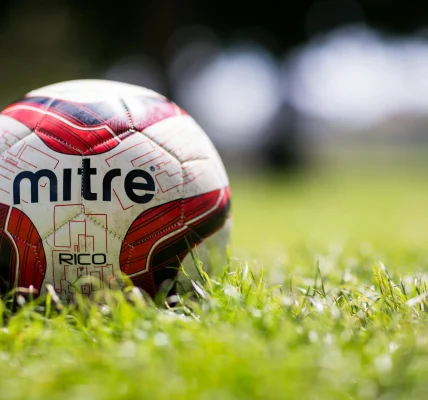Football transfers affect not only the particular teams engaged but also the overall football business. The COVID-19 epidemic has also had a significant impact on the football transfer industry, influencing club strategies on the market and standards for player appraisal. This article will review the shifting topography of football transfers in the post-COVID age together with the elements influencing player values, the tactics clubs are using, and what the transfer market might have ahead.
COVID-19’s Effects on Football Funding
The COVID-19 epidemic drastically changed the football scene and brought financial problems for all kinds of clubs. Matchday income, ticket sales, and in some cases broadcast rights all lost huge money for teams lost with activities set behind closed doors. Especially with relation to player acquisitions, some teams had to reassess their financial strategies in response to the unexpected and significant income decline.
1. Lessened Authority for Spending
Transfer expenditure dropped sharply early on in the epidemic. Based on a Deloitte analysis of the top five European leagues—the English Premier League, La Liga, Serie A, Bundesliga, and Ligue 1—total expenditure in the 2020 summer transfer window shows a 43% decline year to year.
Player assessments changed when teams realized they were not ready to pay the wildly inflated rates approved in the pre-COVID period. As the pool of large spenders shrunk, even elite athletes realized their market prices were declining.
2. Calculating the pay scales once more
The epidemic led to complete overhaul of player pay. To control money flow during the epidemic, some teams haggled with their players on pay cutbacks or deferrals. This changed player values as potential suitors took long-term compensation commitments into account while deciding whether to acquire a player apart from the transfer cost.
As clubs strove to lower their payables while still competitive, the financial burden on them resulted in a rise in the amount of free transfers and loan deals. Since more teams choose financially wise deals instead of flashy acquisitions, this tendency has continued into the post-COVID era.
Variables affecting post-COVID period player values
Football is starting to recover from the financial effects of the epidemic, so the transfer market is starting to normalize even if player assessment approach obviously differs. Some very important elements have become more obvious in the post-COVID era.
1. Age and Future Prospective
Though age has always been a major determinant of player value, in the present market its significance has been enhanced. Since they are considered as long-term investments, younger athletes with great potential are more sought-after assets. Rather of paying high salaries for seasoned stars at the end of their careers, clubs are increasingly concentrating on athletes who can contribute over several years.
For young talents—especially those who may be nurtured into world-class athletes—this change has led to an explosion in market value. Plans of clubs like Borussia Dortmund and RB Leipzig, who have often purchased and nurtured young players before selling them for enormous gains, clearly show the focus on potential rather than experience.
2. Contractive Period
The duration of a player’s contract determines much of their transfer value now. Purchasing teams often have less value as they know they may perhaps find free contractual players in not too long future. On the other hand, since their present teams have more negotiating strength, players with long-term contracts are considered as more valued. Contract terms have prompted pre-contract agreements whereby players agree to join a new club once their present deal ends.
3. Performance Analytics & Data
Football has been using data analytics more and more recently; in the post-COVID age, its effects on player values have notably been underlined. Modern measures are becoming more and more important for teams evaluating a player’s performance, potential, and fit for their lineup. This data-driven method guarantees teams’ value for money in the transfer market by enabling smarter judgments made by them.
Although inexpensive players might not be as tempting to the market as well-known stars, analytics might assist find people who would excel in particular tactical systems. Data analytics has been a roadfinder for clubs like Liverpool and Brentford in spotting and acquiring people who eventually surpass their initial expectations.
Strategies used by clubs Using in the New Transfer Market Clubs have had to change their transfer strategy to be competitive considering the financial restrictions and changing scene of player values. Teams negotiating the post-COVID transfer market are clearly demonstrating certain fundamental ideas.
Focus on Youth Development
Many organizations have turned their attention to fostering homegrown talent as a reasonably cheap option for costly acquisitions. Not only can investing in young academies and providing first team chances help save money; however, should these players be sold for large sums of money, the profits may be really substantial.
Particularly this strategy has been shown by teams like Chelsea, which has introduced academy graduates into the main team while staying active on the transfer market. Development and nurturing of internal talent has become a core competitive advantage in a financially limited context.
Loan Terms and Buy-back Agreements
Teams increasingly use loan arrangements as a kind of financial control and squad management. Without making committed permanent moves, loans let teams decrease pay costs, remove unnecessary players, and offer young players invaluable experience. Before a long-term commitment, loans provide the buying club a tool to evaluate a player’s fit.
Buy-back provisions have also been a common part in transfer contracts especially for younger players. This gives selling teams some degree of influence over a player’s future, therefore maybe returning him should he prove to be a worthwhile asset. This method guarantees clubs have choices ahead and helps with erratic market hedging of bets.
Squad Depth and Adaptability
Squad depth and player adaptability are now providing teams top importance in their surroundings. Clubs are seeking people who can handle several positions on the squad instead of lavishing money on top players. This strategy guarantees the club can adjust to injuries, suspensions, and tactical changes without depending too much on reinforcements, therefore maximizing the worth of every player.
The kind of players signed show this emphasis on adaptability; utility players in several roles are highly sought after. Covering numerous responsibilities helps teams to better control their pay expenditures by lowering the need for big squads.
Football Transfer Policies
Some of the adjustments in the transfer market will most likely become permanent as the football world gets used to the post-COVID reality. Important components of club strategy ahead include most likely data-driven decision-making, budgetary restraint, and an emphasis on young growth.
1. Long View and Environmental Resilience
The epidemic has underlined in football the need of financial sustainability. Clubs must give long-term planning top priority above short-term success, therefore assuring their financial stability even while they stay competitive. This trend toward sustainability may see ongoing reduction of record-breaking transfer expenditures as value and return on investment take front stage.
2. Parity Emerging in the Market of Transference
The financial effects of COVID-19 have somewhat level the playing field; even the richest teams are noticing changes. This more equity can result in a more competitive transfer market where smart recruitment and good reconnaissance take front stage than they have ever done. In these new conditions, clubs who can quickly recognize and nurture talent will be quite competitive.
3. Globalisation and Digitalization
Moreover influencing the direction of transfers will be the ongoing digitization and sport’s globalization. Clubs are turning to worldwide markets more and more in relation to scouting abilities and audience expansion. As football moves into the digital era, the ability to interact with fans and players all around will become even more crucial.
Conclusion
Football transfers have changed significantly in the post-COVID age as a range of new factors influences player values now. Organizing under financial sustainability, young development, and data-based decision-making, companies have changed. These tendencies should guide football as the transfer market expands as they will foster a more competitive and dynamic environment where success is evaluated not just by money but also by clever planning and long-term preparation.


